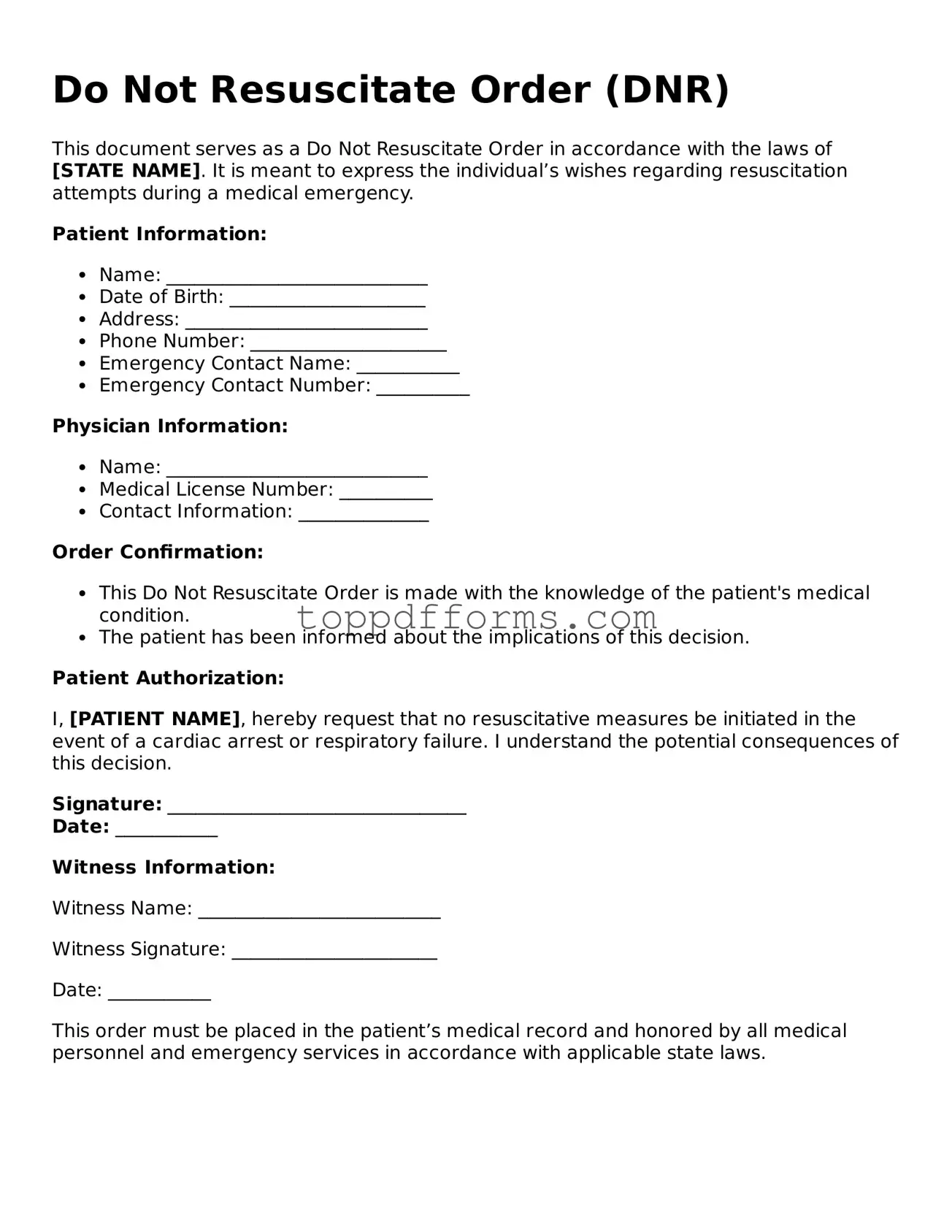Filling out a Do Not Resuscitate (DNR) Order form is a critical decision that requires careful consideration. However, many individuals make common mistakes that can lead to confusion or unintended consequences. Understanding these pitfalls can help ensure that your wishes are accurately documented.
One frequent mistake is failing to sign the form. A DNR order is not valid without the appropriate signatures. Both the patient and the physician must sign the document. Without these signatures, healthcare providers may not honor the DNR wishes.
Another error involves not discussing the DNR order with family members. Open communication is essential. Family members should understand the patient's wishes to prevent misunderstandings during a medical emergency. Without this discussion, loved ones may feel conflicted about the decision.
Some people mistakenly select the wrong options on the form. It's important to read each section carefully. Misunderstanding the choices available can lead to unintended outcomes. For instance, some may think they are opting for a DNR when they are actually consenting to aggressive treatment.
Additionally, individuals often forget to update the DNR order. Life circumstances can change, and so can a person's wishes. If a patient’s health status changes or they have a change of heart, the DNR order should be revised accordingly.
Another common mistake is using outdated forms. Regulations and guidelines can evolve. Always ensure that you are using the most current version of the DNR order form specific to your state. Using an outdated form may cause legal complications.
Some individuals neglect to provide copies of the DNR order to relevant parties. It is essential to share copies with healthcare providers, family members, and anyone involved in the patient's care. Without these copies, the DNR wishes may not be honored in a medical setting.
Inaccurate information can also be a problem. Filling out the form with incorrect personal details, such as the patient's name or date of birth, can lead to legal issues. Ensure that all information is accurate and up-to-date to avoid complications.
Another mistake is not considering state-specific laws. Each state has its own regulations regarding DNR orders. Familiarize yourself with local laws to ensure compliance and validity. Ignoring these laws can result in the DNR order being disregarded.
Lastly, some people may not fully understand the implications of a DNR order. It is crucial to comprehend what a DNR means for treatment options and end-of-life care. Consulting with a healthcare professional can provide clarity and help make informed decisions.
